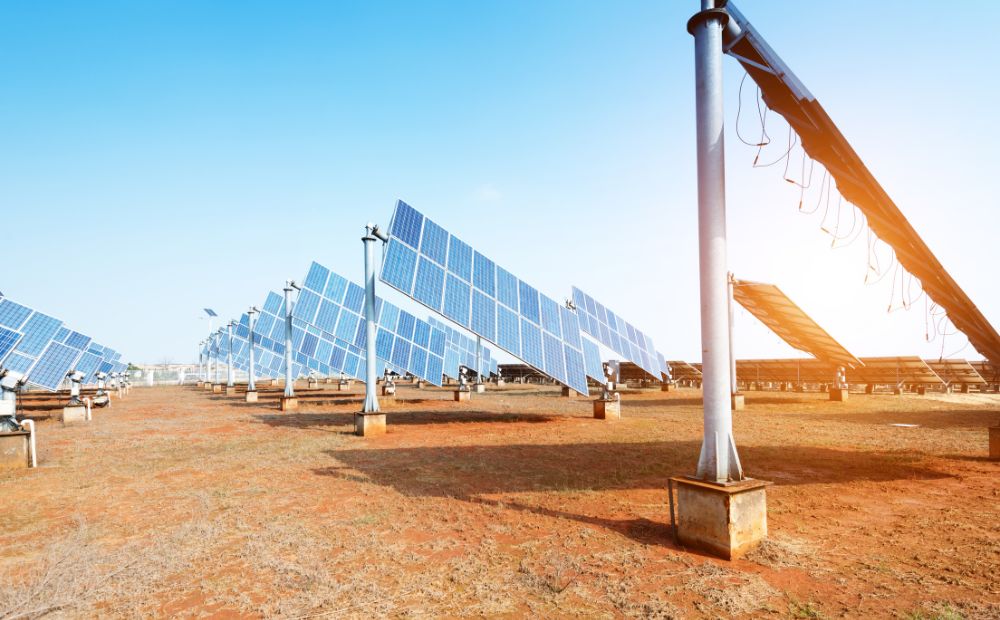Solar Tracking Systems: Maximizing Energy Production with Sun-Tracking Technology

Solar trackers offer significant advantages for renewable energy generation, leading to an increase in power output of approximately 30 to 40 percent, thus creating opportunities in new markets for solar power. Nonetheless, solar trackers come with notable drawbacks. Unlike static solar panels with long-lasting warranties and low maintenance requirements, solar trackers possess shorter warranties and necessitate one or more actuators for panel movement.
These mobile components not only elevate installation expenses and decrease reliability but also introduce energy consumption, which is unnecessary in passive systems. Furthermore, computer-based algorithm solar trackers, though more costly and demanding additional maintenance, face obsolescence sooner compared to static solar panels due to their reliance on rapidly advancing electronic components that may be challenging to replace within short timeframes. Curious how solar PV panels get optimal sunlight exposure? It’s thanks to solar trackers!
Solar tracking systems adjust the direction of panels to align with the sun, ensuring they remain perpendicular to its rays. This minimizes reflection and maximizes energy capture, as a narrower angle of incidence leads to higher energy generation. While commonly used for positioning solar photovoltaic panels, solar trackers are also valuable for space telescopes. Want to know how these systems work? Stay tuned as we explain everything about solar trackers in this blog.
Let’s Look Into The Working:
A solar tracker operates as an auto-tracking control system, comprising PV cells, a PLC, signal processing units, sensors, electromagnetic and mechanical motion control modules, and power supply systems. When sunlight intensity increases, the panel activates and transmits this information to the sensors, which then relay it to the PLC. The PLC processes this data and generates an output that directs the motor to rotate the panel towards the sun. A solar panel aligned precisely perpendicular to the sun produces more power than one that is not.

Types of Solar Trackers:
Types of Solar Trackers
Based on their working method, solar trackers can be classified as:
1. Passive Tracking Devices: Passive solar trackers operate without an additional energy source. They move by using the sun’s heat to expand a gas inside the system, which creates mechanical movement of the PV panels.
– When one side of the tracker heats up, the gas expands, causing a piston to rise and tilt the panel toward the sunny side.
– As the sun sets and the gas cools, it compresses again, allowing the panels to rotate back.
2. Active Tracking Devices: Most solar tracking systems are active solar trackers. These systems have an energy supply to operate a motor or mechanical device, allowing them to directly tilt the attached solar panels.
– Active solar trackers use light sensors to determine sunlight intensity.
– The system then calculates the optimal orientation for the solar modules.
– These trackers are best suited for large and complex solar arrays.
3. Open Loop Trackers: using controlled algorithms or simple timing systems, which are further divided into:
– Timed Trackers: Timed open loop sun trackers adjust the position of solar panels based on a preset schedule rather than real-time feedback from sensors. They use a clock or timer to trigger movements at specific intervals, following a pre-calculated path that aligns with the sun’s position throughout the day. This type of tracker is simpler, more reliable, and cost-effective compared to closed loop systems, but may be less precise in varying environmental conditions. Ideal for budget-conscious projects in areas with consistent sunlight, they provide a balance between improved solar energy capture and system complexity.
– Altitude/Azimuth Trackers: Azimuth open loop sun trackers adjust the horizontal angle (azimuth) of solar panels to follow the sun’s east-to-west movement throughout the day. They operate based on pre-programmed algorithms or schedules, without using real-time sensors. These trackers are simpler and more cost-effective than sensor-based systems, providing moderate efficiency improvements while being easier to maintain. Ideal for residential and commercial solar installations, they offer a balance between enhanced energy capture and system simplicity.
Based on their motion or directional flexibility, solar trackers can be categorized as:
1.Single-Axis Solar Trackers: A single-axis tracker rotates solar panels around one axis, typically aligned in the North-South direction. This allows the panels to follow the sun’s movement from East to West as it rises and sets. By enabling the panels to track the sun, it enhances the system’s efficiency without needing additional PV modules. These trackers are best installed on flat, sunny, and dry land. Although the initial installation cost is high, the increase in productivity can quickly offset these expenses.
2.Dual-Axis Solar Trackers: A dual-axis tracker allows solar panels to rotate on two axes simultaneously, providing movement in all directions: North, South, East, and West. This type of tracker is suitable for some commercial properties and is designed to maximize solar energy generation throughout the year. Using algorithms and sensors, dual-axis trackers can adjust to seasonal changes and the varying height of the sun, in addition to its daily motion.
Benefits of a Solar Tracker:
1. Increased Productivity: Solar trackers boost the productivity of solar panels by ensuring higher direct sunlight exposure. Productivity gains depend on the geographic location of the installation.
2. Simple and Eco-friendly Energy: These devices conveniently track the sun, resulting in better energy output and providing a sustainable power source.
3. Land Optimization: Solar trackers optimize land use by generating more electricity compared to non-tracking systems while occupying the same amount of space.
4. Easy Monitoring: You can monitor your solar tracking system’s performance directly from your PC.
But are there any drawbacks to using a solar panel tracker? Let’s find out!
Limitations of Solar Tracker
Limitations of Solar Tracker:
1. High Cost: Solar tracking devices are more expensive due to their moving parts, resulting in higher initial costs.
2. Increased Maintenance: These systems require more maintenance, though the extent depends on the type and quality of the tracking system.
3. Site Preparation Requirements: Installation of solar tracking systems involves significant site preparation, including additional trenching for wiring and grading.
4. Weather Constraints: Solar trackers are less effective in snowy weather and are most beneficial in hot climates.
Some of the industry leaders in this sector are enlisted below:
Nextracker
Array Technologies, Inc.
PV Hardware
Soltec (Soltec Power Holdings)
GameChange Solar
Arctech Solar
FTC Solar
IDEEMATEC
Versolsolar Hangzhou Co., Ltd. (Versolsolar)
Axial Structural Solutions
A solar energy tracking system is highly beneficial for installations in areas with good solar energy access. By ensuring your panels follow the sun throughout the day, solar trackers can significantly boost power production in both ground-mounted and roof-mounted systems. However, not all solar panel installations are suitable for tracking devices.
When considering solar tracking, you should evaluate factors such as climate, available space, and shading. These devices are ideal for installations with limited space and high energy demands. They offer the most benefits in high latitude locations due to the sun’s yearly movements. Additionally, solar trackers are often used in large commercial projects and can be very advantageous depending on the climate and installation site.
A solar tracker aligns solar panels with the sun, using advanced monitoring systems to rotate the panels and follow the sun’s path across the sky. This maximizes sunlight capture and optimizes energy output, offering significant benefits for solar energy systems. To facilitate an understanding of the latest developments and trends in the Renewable energy Industry, various Conferences and Expos, which bring the Industry leaders together, are crucial.
The Energy Evolution Awards, Conference, and Expo organized by Next Business Media is making its debut in Spain in 2025. It will be a leading forum dedicated to honoring excellence in Energy Technology, showcasing innovations, and fostering collaborations. The events unite industry leaders, and visionaries to explore the latest advancements, tackle key challenges, and shape the future of Energy.
The Energy Evolution Awards, Conference, and Expo will celebrate outstanding achievements, promote sustainable practices, and drive the Energy Industry forward into a technologically advanced sustainable era. Energy Evolution Awards, Conference, and Expo will be a platform for cultivating innovation and shaping a brighter, more efficient energy landscape.





